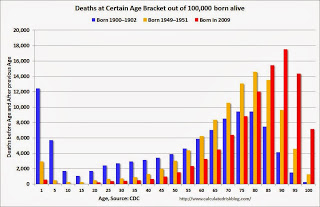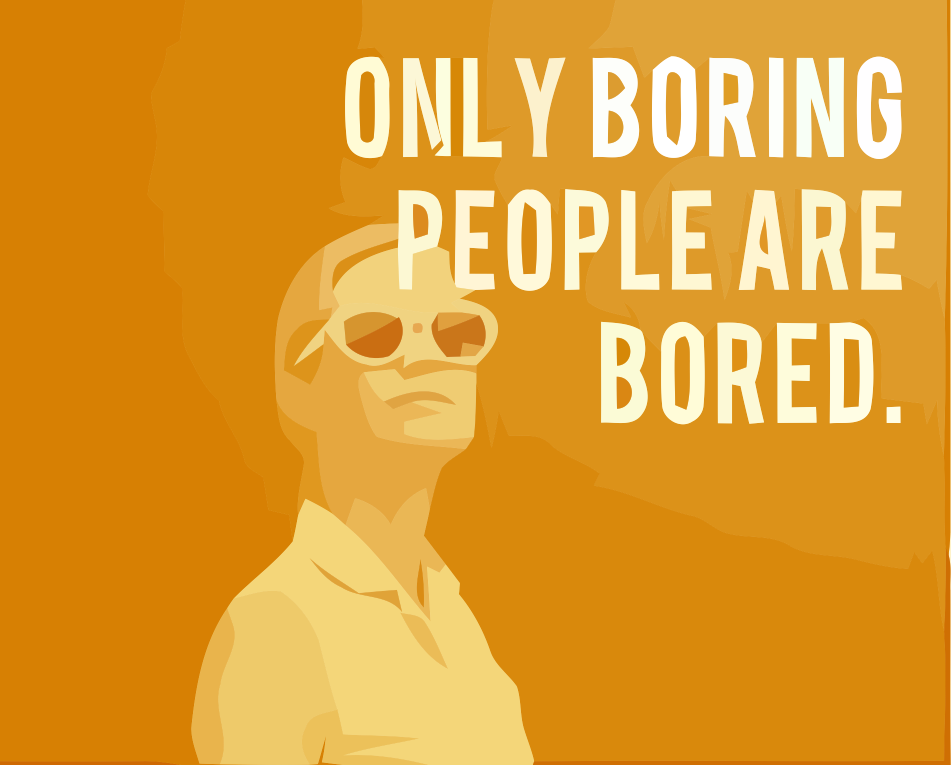Imagine if you were born in 1900. You'd have a 23% chance of dying before age 20 (a 13% change before age 1). You'd have a 38% chance of dying before age 45 (see first two graphs below).
Compare that to kids born recently. You'd have about a 1% chance of dying before age 20, and about a 4% chance of dying before age 45. A dramatic change over the last century.
How would this effect your behavior? If you were born in 1900, you'd want to get married early, and have plenty of children. If you were born recently, you'd probably take your time - get married later, have fewer children - and education would be more valuable (because you'd probably live longer).
So we'd expect to see more young people stay in school, and more older people stay in the work force - and that is exactly what is happening.
Some people look at these trends and worry about supporting all the old people. To me, this is all great news - the vast majority of people can look forward to a long life - with fewer people dying in childhood or during their prime working years.
Here is some data from the CDC United States Life Tables, 2009 by Elizabeth Arias released earlier this year (repeated from an earlier post):
The most frequently used life table statistic is life expectancy (ex), which is the average number of years of life remaining for persons who have attained a given age (x). ... Another way of assessing the longevity of the period life table cohort is by determining the proportion that survives to specified ages. ... To illustrate, 56,572 persons out of the original 2009 hypothetical life table cohort of 100,000 (or 56.6%) were alive at exact age 80. In other words, the probability that a person will survive from birth to age 80, given 2009 age-specific mortality, is 56.6%.
emphasis added
Instead of look at life expectancy, here is a graph of survivors out of 100,000 born alive, by age for three groups: those born in 1900-1902, born in 1949-1951 (baby boomers), and born in 2009.
 Click on graph for larger image.
Click on graph for larger image.
There was a dramatic change between those born in 1900 (blue) and those born mid-century (orange). The risk of infant and early childhood deaths dropped sharply, and the risk of death in the prime working years also declined significantly.
The CDC is projecting further improvement for childhood and prime working age for those born in 2009, but they are also projecting that people will live longer.
 The second graph uses the same data but looks at the number of people who die before a certain age, but after the previous age. As an example, for those born in 1900 (blue), 12,448 of the 100,000 born alive died before age 1, and another 5,748 died between age 1 and age 5.
The second graph uses the same data but looks at the number of people who die before a certain age, but after the previous age. As an example, for those born in 1900 (blue), 12,448 of the 100,000 born alive died before age 1, and another 5,748 died between age 1 and age 5.
The peak age for deaths didn't change much for those born in 1900 and 1950 (between 76 and 80, but many more people born in 1950 will make it).
Now the CDC is projection the peak age for deaths - for those born in 2009 - will increase to 86 to 90! Using these stats - for those born in 2014 - about half will make it to the next century.
Also the number of deaths for those younger than 20 will be very small (down to mostly accidents, guns, and drugs). Self-driving cars might reduce the accident component of young deaths.
And the next graph shows the impact of changing demographics on labor force participation. The 2022 projections are based on a recent article from BLS economist Mitra Toossi: Labor force projections to 2022: the labor force participation rate continues to fall
 Probably the main reason for the decline in the participation rate for the younger age groups is that more people are pursuing higher education (graphs in previous post show increase in enrollment).
Probably the main reason for the decline in the participation rate for the younger age groups is that more people are pursuing higher education (graphs in previous post show increase in enrollment).
I'll have more on this soon, but all of this is great news!
Copyright © Calculated Risk















